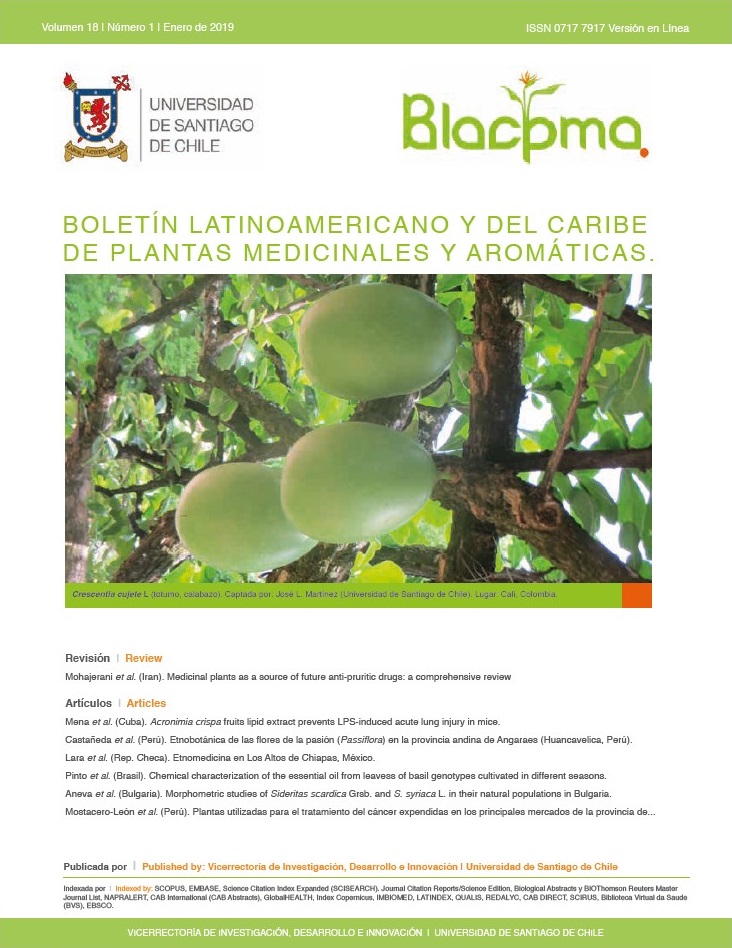Chemical characterization of the essential oil from leaves of basil genotypes cultivated in different seasons
Keywords:
Ocimum basilicum, Seasonal variation, Chemical diversity, Essential oilsAbstract
The aim of this study was to evaluate the concentration and chemical composition of the essential oil the leaves of basil cultivars and hybrids cultivated in different cropping seasons: dry season and rainy season. The variables evaluated were the content and composition of essential oils in the two seasons. The essential oil content ranged from 0.66% to 3.21% in the dry season and from 0.80% to 4.20% in the rainy season. The major compounds found among the genotypes were linalool, methyl chavicol, neral, geranial, eugenol, and methyl (E)-cinnamate, defining the formation of five groups in each season, classified in the following chemotypes: methyl chavicol (Group 1), citral (neral+geranial) (Group 2), methyl cinnamate (Group 3), linalool (Group 4), and intermediate linalool (Group 5). All the traits evaluated had heritability (h²) greater than 95% and high CVg/CVe ratio values. The cropping season affected the content and chemical compositions of basil essential oil.
Downloads
Downloads
Published
How to Cite
Issue
Section
License

This work is licensed under a Creative Commons Attribution-NonCommercial-NoDerivatives 4.0 International License.

